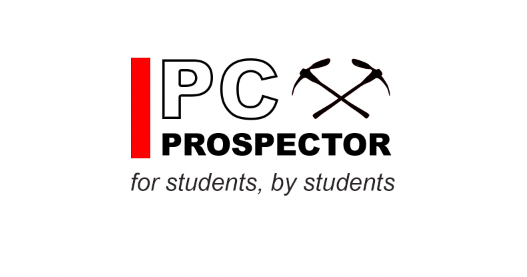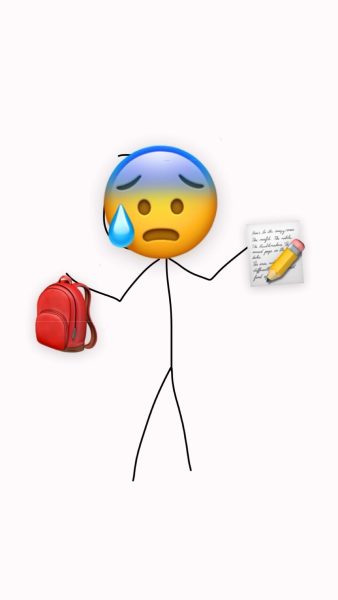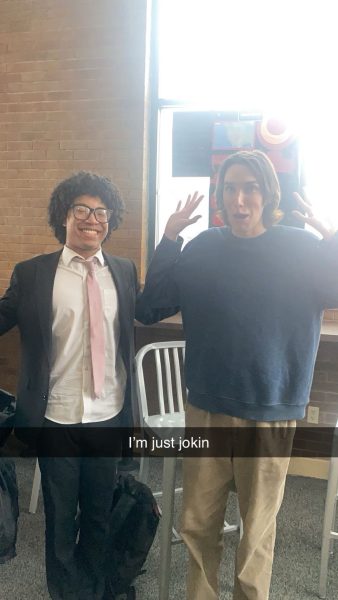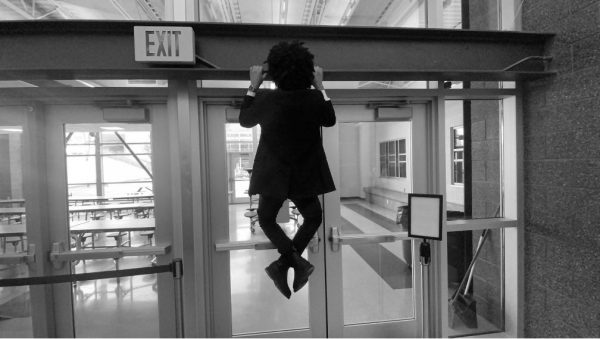How Do We Make the Most of the Mask Policy?
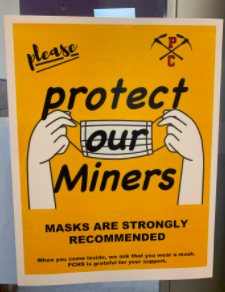
After a year dominated by masks, quarantining, and social distancing, pandemic fatigue is common among the Park City High School student body. This is only exacerbated by the constant onslaught of intense polarizing news. In the wake of such a tumultuous year, it’s no surprise that students want things to go back to normal. But in more ways than one, that hasn’t happened.
In the wider world, the pandemic is caught in a form of limbo. During the summer, higher vaccination rates seemed to indicate that the crisis was coming to a close. But then the more contagious Delta variant of COVID-19 arrived and caused more destruction. At PCHS, how do we make the most of this strange limbo—both in terms of pandemic safety and school unity?
PCHS’s administration is highly recommending, but not requiring, that their students and teachers wear masks. According to Utah state law, the school cannot enforce a mask mandate without the support of the county health department.
According to the Utah state website, mask mandates for school or school activities cannot be created by a “local education agency, an LEA [local education agency] governing board, the state board, the state superintendent, or a school.”
The only way schools can have mask mandates is if the mandates are created by the county health department. Even then, the mandates require approval from state or local elected officials and can last for a maximum of thirty days. A mandate can also be overturned at any time by the Utah Legislature or local elected officials.
The Summit County health department has not said if or when they would require masks in high schools. Roger Arbabi, the principal of PCHS, said he does not know if the health department would impose a mandate.
In this scenario, the high school administration is left essentially powerless to require masks. While this does provide a welcome dose of normalcy for most students, it also complicates COVID-19 prevention.
When vaccines were rolled out last spring, they were heralded as the end of the pandemic. Vaccines are the best way to achieve herd immunity (a scenario in which the level of people immune to a disease in society is so high, that the disease cannot spread). But the reality is more complicated.
Everyone over twelve in Summit County is eligible for the vaccine, including high school students. According to Arbabi, about eighty to ninety percent of PCHS students are vaccinated. These vaccinations provide a very high layer of protection from COVID-19.
“Infections happen in only a small proportion of people who are fully vaccinated, even with the Delta variant. When these infections occur among vaccinated people, they tend to be mild,” says the CDC website.
However, five students have already tested positive for COVID-19 at the high school. Despite the high rates of vaccinations here, the pandemic has reached the school again this year.
Especially among those who are unvaccinated, COVID-19 remains a threat. At PCHS, there is no longer an online option for learning, so everyone must come to “in-person” school for education. While that helps foster a sense of community, it doesn’t allow those who are unvaccinated to stay at home if they chose.
What we are left with is a scenario in which everyone, vaccinated and unvaccinated, is taking classes in person, often without masks. With the Delta variant on the rise, this threatens to be a precarious situation.
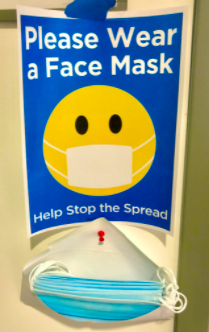
Nothing is a complete substitute for vaccines, but masks are the second-best option we have. Not only has mask-wearing been proven safe, but it is a relatively minor inconvenience in the grand scheme of things.
“Experimental and epidemiological data support community masking to reduce the spread of SARS-CoV-2,” concludes the CDC.
In light of this information, we at the Park City Prospector believe that unvaccinated students should choose to wear masks.
But just as important is fostering an inclusive learning environment. Masks have been an incredibly polarizing issue since the start of the pandemic, leading to intense political divides. Every student approaches this issue with their own worldview, and viewing masks as a black and white issue is counterproductive.
No student, vaccinated or not, should ever be singled out or ostracized for not wearing a mask. Creating a safe learning environment is not just about pandemic restrictions. It is also about making students feel accepted and welcome. Mask shaming will not help solve the problem, it will only exacerbate division that should not belong at PCHS.
Everyone wants to be able to go back to the school environment from before the pandemic—one without masks or contact tracing or persistent coronavirus-related divisions. But in order to preserve what normalcy we have now, we need to take some precautions. While that includes unvaccinated people wearing masks, it also includes creating a culture of inclusion regardless of mask opinions.
